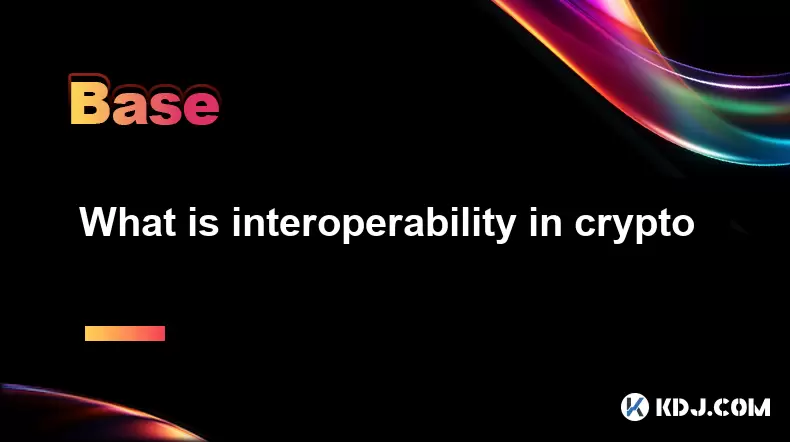-
 Bitcoin
Bitcoin $121,713.8152
3.06% -
 Ethereum
Ethereum $3,041.6437
2.42% -
 XRP
XRP $2.9499
5.12% -
 Tether USDt
Tether USDt $1.0000
-0.02% -
 BNB
BNB $704.1034
1.75% -
 Solana
Solana $166.7523
2.91% -
 USDC
USDC $0.9999
0.00% -
 Dogecoin
Dogecoin $0.2052
2.90% -
 TRON
TRON $0.3011
-0.47% -
 Cardano
Cardano $0.7461
1.42% -
 Hyperliquid
Hyperliquid $48.3650
1.12% -
 Stellar
Stellar $0.4548
3.52% -
 Sui
Sui $3.9527
14.50% -
 Chainlink
Chainlink $16.3300
5.87% -
 Bitcoin Cash
Bitcoin Cash $511.8016
1.25% -
 Hedera
Hedera $0.2395
1.40% -
 Avalanche
Avalanche $21.6526
2.06% -
 UNUS SED LEO
UNUS SED LEO $9.0073
-0.23% -
 Shiba Inu
Shiba Inu $0.0...01369
2.61% -
 Toncoin
Toncoin $3.0335
0.66% -
 Litecoin
Litecoin $96.6206
1.72% -
 Monero
Monero $355.1673
5.35% -
 Polkadot
Polkadot $4.0839
2.47% -
 Uniswap
Uniswap $9.3282
9.72% -
 Dai
Dai $0.9997
-0.01% -
 Ethena USDe
Ethena USDe $1.0004
-0.04% -
 Pepe
Pepe $0.0...01248
1.07% -
 Bitget Token
Bitget Token $4.4642
2.68% -
 Aave
Aave $325.0626
6.81% -
 Bittensor
Bittensor $418.1482
6.22%
What is interoperability in crypto
Interoperability in cryptocurrency enables seamless communication and asset transfers between different blockchain networks, enhancing user experience, scalability, and cross-chain DeFi functionality.
Jul 14, 2025 at 01:21 pm

Understanding the Concept of Interoperability in Cryptocurrency
In the rapidly evolving world of blockchain and cryptocurrencies, interoperability has emerged as a critical concept. Simply put, interoperability refers to the ability of different blockchain networks to communicate, exchange data, and execute transactions seamlessly with one another. In a space where numerous blockchains operate independently—each with its own protocols, consensus mechanisms, and smart contract languages—the lack of communication between them creates siloed ecosystems.
The core idea behind interoperability in crypto is to enable cross-chain functionality. This means users can transfer assets or data from one blockchain to another without relying on centralized intermediaries. For instance, someone holding Bitcoin (BTC) might want to use it on the Ethereum network to interact with decentralized applications (dApps), but without interoperability solutions, this isn’t natively possible.
Why Is Blockchain Interoperability Necessary?
One of the primary reasons for developing interoperable systems in the crypto sphere is to enhance user experience and utility across platforms. Without interoperability, each blockchain operates like an isolated island, limiting the potential for innovation and adoption. Users are forced to manage multiple wallets, deal with varying transaction fees, and face delays when converting assets between chains.
Another important factor driving the need for interoperability in crypto is scalability. As more projects launch their own blockchains, the ecosystem becomes fragmented. Interoperability bridges these gaps by enabling efficient asset transfers and shared functionalities. It also encourages collaboration among developers, allowing them to build on top of existing infrastructures rather than reinventing the wheel for every new chain.
How Do Interoperability Protocols Work?
Interoperability protocols function by acting as bridges between disparate blockchains. These protocols often rely on smart contracts, relays, oracles, and sidechains to facilitate communication and value transfer. One common method involves locking assets on one chain and minting equivalent tokens on another, which can then be used within that network’s ecosystem.
For example, if a user wants to move ETH to a different blockchain, they would send their ETH to a smart contract address. Once confirmed, a corresponding token representing that ETH is issued on the target chain. When the user decides to return their funds, the mirrored tokens are burned, and the original ETH is unlocked.
Key components involved in these processes include:
- Cross-chain bridges: Enable the movement of assets between two chains.
- Relay chains: Act as intermediaries that verify events on other chains.
- Oracles: Provide external data inputs to trigger smart contract actions.
Types of Interoperability Solutions in Crypto
There are several approaches to achieving interoperability in crypto, each with its own advantages and limitations. The most notable categories include:
- Wrapped Tokens: These are tokens that represent assets from one blockchain on another. For example, wBTC is an ERC-20 token that mirrors BTC's value and allows it to be used on Ethereum-based platforms.
- Sidechains: Independent blockchains connected to a mainchain via a two-way peg, allowing assets to move freely between them. An example is the Polygon network, which connects with Ethereum.
- Atomic Swaps: Enable direct peer-to-peer exchanges between different cryptocurrencies without needing a trusted third party.
- Cosmos and Polkadot: These are ecosystems specifically designed for interoperability. Cosmos uses the IBC protocol to connect independent blockchains, while Polkadot employs a relay chain model to coordinate parachains.
Each solution offers a unique mechanism to solve the interoperability challenge, and choosing the right one depends on factors such as security requirements, decentralization levels, and intended use cases.
Risks and Challenges Associated With Cross-Chain Interoperability
While interoperability in crypto unlocks significant potential, it also introduces risks that must be carefully managed. One major concern is the security of cross-chain bridges. Many high-profile hacks have targeted bridge protocols, leading to massive losses of user funds. Because bridges hold large quantities of locked assets, they become attractive targets for malicious actors.
Additionally, ensuring trustless operation across chains remains a technical challenge. Most current solutions still require some degree of centralization, whether through custodians managing wrapped assets or validators overseeing relay chains. True decentralization across multiple chains is difficult to achieve without compromising speed or cost efficiency.
Other issues include:
- Latency: Delays in confirming transactions across chains can hinder real-time interactions.
- Complexity: Integrating multiple standards and protocols increases development and maintenance efforts.
- Regulatory uncertainty: Cross-border and cross-chain operations may raise compliance questions depending on jurisdictional laws.
Frequently Asked Questions (FAQ)
Q: What is the difference between interoperability and compatibility in crypto?
A: Compatibility refers to whether a system can accept or work with certain types of data or functions, while interoperability goes further by enabling seamless interaction and data exchange between distinct systems.
Q: Can all cryptocurrencies be made interoperable?
A: In theory, yes, but practical implementation depends on the willingness of developers and communities to adopt interoperability protocols. Some blockchains may resist integration due to governance or philosophical reasons.
Q: Are there any fully decentralized interoperability solutions?
A: While many solutions strive for decentralization, achieving full decentralization across multiple chains remains challenging. Projects like Cosmos IBC come closer by using permissionless validator sets and cryptographic proofs.
Q: How does interoperability affect DeFi?
A: Interoperability enhances DeFi by enabling liquidity to flow across chains, expanding access to financial services, and allowing users to leverage assets from various ecosystems within a single platform.
Disclaimer:info@kdj.com
The information provided is not trading advice. kdj.com does not assume any responsibility for any investments made based on the information provided in this article. Cryptocurrencies are highly volatile and it is highly recommended that you invest with caution after thorough research!
If you believe that the content used on this website infringes your copyright, please contact us immediately (info@kdj.com) and we will delete it promptly.
- Trump, Bitcoin, and Reserves: A New Era for Crypto?
- 2025-07-14 22:50:11
- Bitcoin's Wild Ride: All-Time Highs and Crypto Week Mania!
- 2025-07-14 23:10:12
- Bitcoin's Wild Ride: Coin Surge and Fintech Experts Weigh In
- 2025-07-14 23:10:12
- Bitcoin's Ascent: From Crypto to Valuable Asset Dominating Global Finance
- 2025-07-14 22:30:11
- Bitcoin Price Prediction & AI Tokens: Riding the Crypto Wave
- 2025-07-14 22:50:11
- Strategy Scoops Big Bitcoin Paper Gains: A New York Minute
- 2025-07-14 22:55:12
Related knowledge

What is the Bitcoin dominance index
Jul 12,2025 at 10:35pm
Understanding the Bitcoin Dominance IndexThe Bitcoin Dominance Index, often abbreviated as BTC.D, is a metric used to measure Bitcoin's market capital...

What is the Bitcoin dominance index
Jul 11,2025 at 04:29am
What is the Bitcoin Dominance Index?The Bitcoin Dominance Index is a metric used to gauge Bitcoin's market capitalization relative to the total market...

Can crypto be a hedge against inflation
Jul 14,2025 at 12:21am
Understanding the Concept of Hedging Against InflationInflation refers to the general increase in prices and fall in the purchasing value of money ove...

Can crypto be a hedge against inflation
Jul 12,2025 at 12:07pm
Understanding the Role of Blockchain in Decentralized Finance (DeFi)Blockchain technology serves as the backbone of decentralized finance, offering a ...

What are account abstraction wallets
Jul 13,2025 at 01:43am
Understanding the Concept of Account AbstractionAccount abstraction is a term frequently used in the Ethereum ecosystem, particularly within discussio...

What does "gas limit" vs "gas price" mean
Jul 13,2025 at 04:00am
Understanding the Basics of Gas in Blockchain TransactionsIn the Ethereum and other EVM-compatible blockchains, every transaction requires computation...

What is the Bitcoin dominance index
Jul 12,2025 at 10:35pm
Understanding the Bitcoin Dominance IndexThe Bitcoin Dominance Index, often abbreviated as BTC.D, is a metric used to measure Bitcoin's market capital...

What is the Bitcoin dominance index
Jul 11,2025 at 04:29am
What is the Bitcoin Dominance Index?The Bitcoin Dominance Index is a metric used to gauge Bitcoin's market capitalization relative to the total market...

Can crypto be a hedge against inflation
Jul 14,2025 at 12:21am
Understanding the Concept of Hedging Against InflationInflation refers to the general increase in prices and fall in the purchasing value of money ove...

Can crypto be a hedge against inflation
Jul 12,2025 at 12:07pm
Understanding the Role of Blockchain in Decentralized Finance (DeFi)Blockchain technology serves as the backbone of decentralized finance, offering a ...

What are account abstraction wallets
Jul 13,2025 at 01:43am
Understanding the Concept of Account AbstractionAccount abstraction is a term frequently used in the Ethereum ecosystem, particularly within discussio...

What does "gas limit" vs "gas price" mean
Jul 13,2025 at 04:00am
Understanding the Basics of Gas in Blockchain TransactionsIn the Ethereum and other EVM-compatible blockchains, every transaction requires computation...
See all articles

























































































